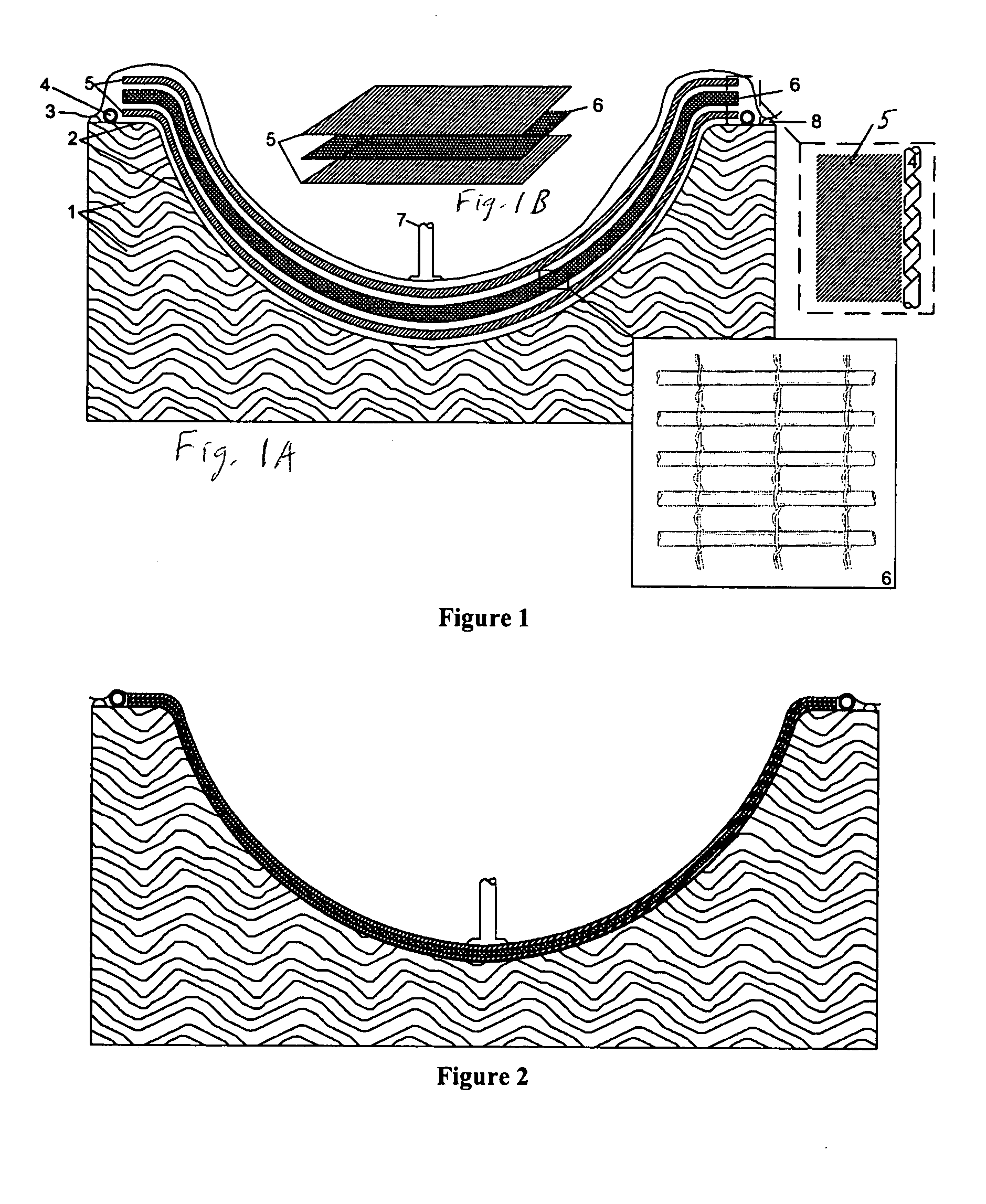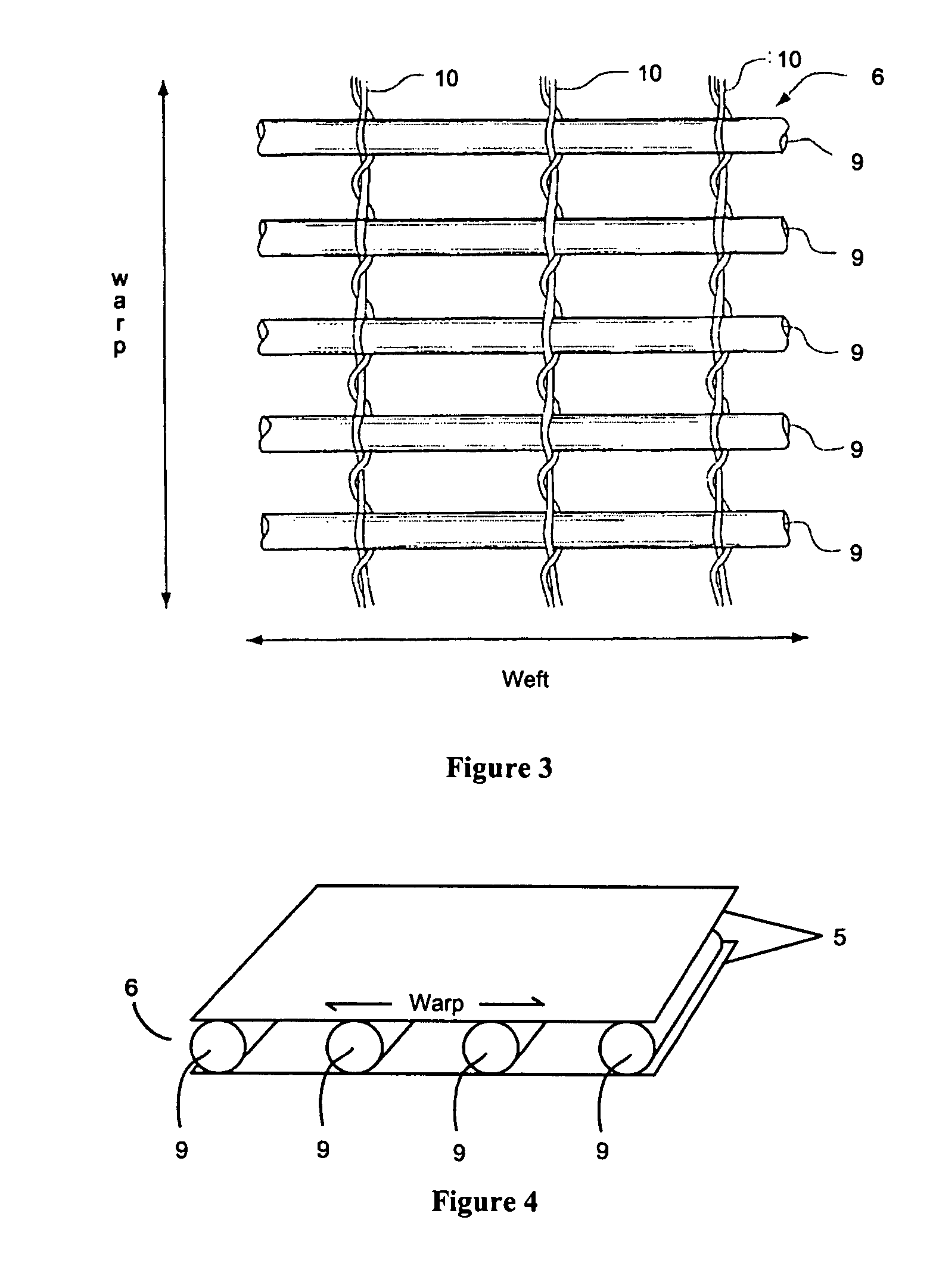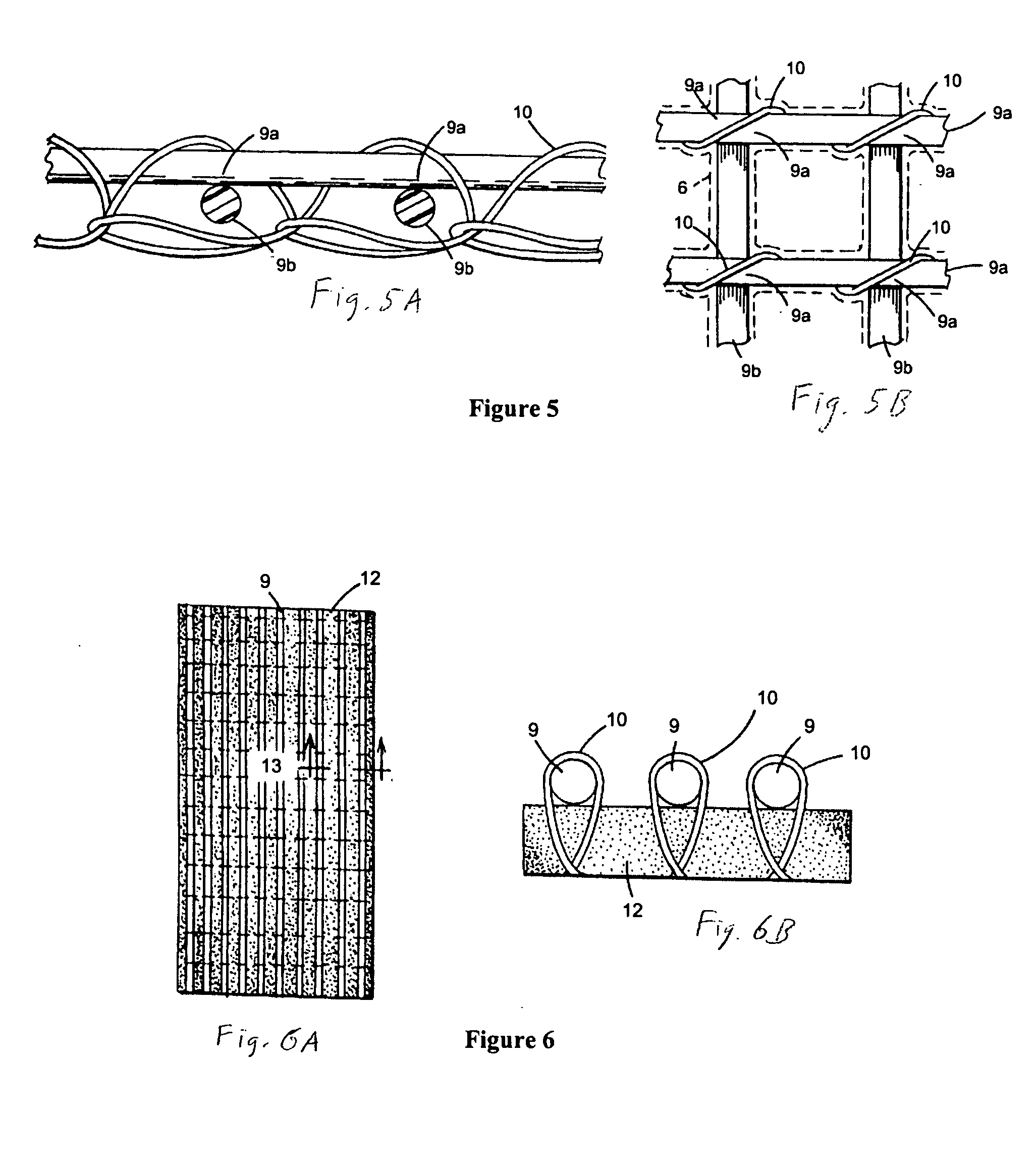Open grid fabric resin infusion media and reinforcing composite lamina
- Summary
- Abstract
- Description
- Claims
- Application Information
AI Technical Summary
Benefits of technology
Problems solved by technology
Method used
Image
Examples
Embodiment Construction
[0054] In the drawings, FIG. 1 is a cross sectional view of a typical vacuum infusion mold assembly comprised of one rigid mold 1 having a shaped mold surface or face 2 and one flexible bag or membrane 3, but with an open grid fabric resin infusion medium employed and reinforcing composite lamina placed in the laminate, or ply stacking sequence. The vacuum bag 3 is placed over the open mold, and is associated with the perforated resin infusion tubing 4 (shown in cross sectional and top plan views). The laminate layup is composed of fibrous lamina 5, an open grid fabric layer 6 (also shown in top plan view), and a vacuum tubing inlet 7, and with a sealant tape 8.
[0055] As shown in FIG. 1, dry fiber reinforcement is laid into a mold of the desired shape 1. In this example, the open grid fabric 6 is placed between two layers of fiber reinforcement or lamina 5 to make up the laminae. A flexible sheet of plastic 3 is placed over the mold and laminate. The edges of the sheet are sealed a...
PUM
| Property | Measurement | Unit |
|---|---|---|
| Fraction | aaaaa | aaaaa |
| Fraction | aaaaa | aaaaa |
| Fraction | aaaaa | aaaaa |
Abstract
Description
Claims
Application Information
 Login to View More
Login to View More - R&D
- Intellectual Property
- Life Sciences
- Materials
- Tech Scout
- Unparalleled Data Quality
- Higher Quality Content
- 60% Fewer Hallucinations
Browse by: Latest US Patents, China's latest patents, Technical Efficacy Thesaurus, Application Domain, Technology Topic, Popular Technical Reports.
© 2025 PatSnap. All rights reserved.Legal|Privacy policy|Modern Slavery Act Transparency Statement|Sitemap|About US| Contact US: help@patsnap.com



